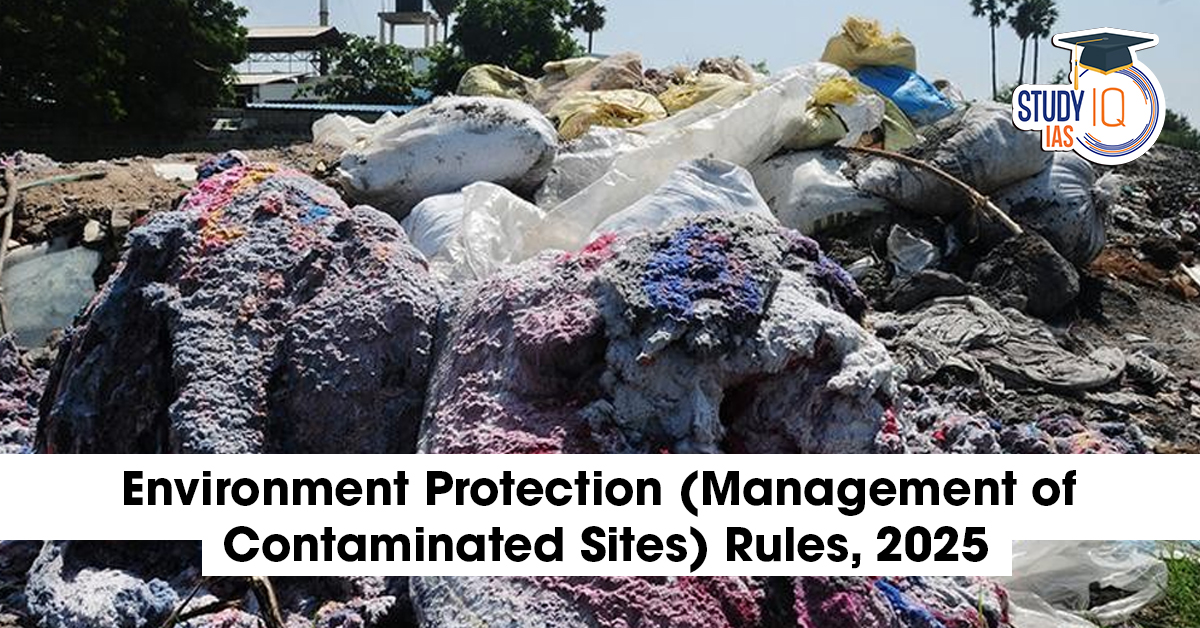Context: The Ministry of Environment, Forest and Climate Change (MoEFCC) has notified the Environment Protection (Management of Contaminated Sites) Rules, 2025 under the Environment Protection Act (EPA), 1986.
Environment Protection (Management of Contaminated Sites) Rules, 2025: Key Provisions
Definition of Contaminated Sites
- Sites are polluted due to historical hazardous waste dumping, leading to soil, groundwater, or surface water contamination.
- Examples: old landfills, chemical waste dumps, and spill sites.
Identification and Reporting
District Administration to submit half-yearly reports on suspected sites to the State Pollution Control Board (SPCB) or designated authority.
- SPCBs/expert bodies to carry out a preliminary assessment within 90 days, followed by a detailed investigation in the next 90 days.
- If hazardous chemicals (from the list of 189 under Hazardous Waste Rules, 2016) exceed safe limits, the site is formally declared “contaminated.”
- Names and details of such sites must be publicly notified; restrictions must be placed on access.
Remediation Planning
A designated reference organisation (expert body) will prepare a site-specific remediation plan.
Liability and Cost Recovery
- Polluter Pays Principle: the identified polluter bears clean-up costs.
- If the polluter is untraceable/unable to pay, expenses will be shared between the Centre and States.
Criminal Liability
Any loss of life or environmental damage due to contamination will attract penalties under the Bharatiya Nyaya Sanhita (BNS), 2023.
Exclusions
Rules do not apply to contamination from:
- Radioactive waste
- Mining operations
- Marine oil pollution
- Solid waste dumps
- These are governed by separate, specific legislation.


 Bonnet Macaques: Habitat, Features, Beha...
Bonnet Macaques: Habitat, Features, Beha...
 Periyar Tiger Reserve, Map, Flora, Fauna...
Periyar Tiger Reserve, Map, Flora, Fauna...
 Project Cheetah in India, Objectives, Ch...
Project Cheetah in India, Objectives, Ch...

























